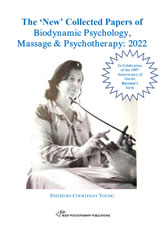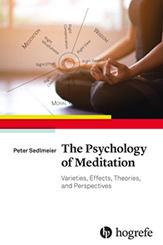Therapeutic Touch: Research, Practice and Ethics
Touch is essential to human life. From the earliest writings by Ashley Montaqu (1971) who discussed the importance of nurturing touch to help babies thrive physiologically and emotionally to a recent study lead by Nathalie Maitre at Nationwide Children’s Hospital in Columbus, Ohio that demonstrated the significance of sensory experiences in early life on brain development— physical attention during a baby’s development, during our entire lives in fact, is important—the more you hug and cuddle your babies, the more their brains grow.
According to Maitre, our sensory system supporting touch and bodily sensation is the earliest to develop in human beings; further, it forms the basis for other sensory development as well as our cognitive and social development. Maitre’s study established that nurturing touch is essential for infant development with study outcome demonstrating that positive proper touch increased brain activity while negative touch (pin pricks, tube insertions) decreased brain activity.
As human beings, we crave touch. There’s an instinctive need to feel another—be it a lover’s hand, a mother’s breast. The soft fuzz of an animal’s fur, even the gristle of a father’s beard can create pleasurable sensations when contact is loving and supportive. As body psychotherapists, many of us acknowledge the value of appropriate touch in the therapeutic setting—of course within proper boundaries and acceptable containment and with the client’s permission. As therapists, we must be clear about why we want to integrate touch, discuss what kind of touch, and for whose purpose the touch is occuring (certainty not to make the therapist feel better!).
Embodied Social Justice
Written by Rae Johnson
Reviewed by Nancy Eichhorn
A story to start, to illustrate potent nuances that, without awareness, perpetuate inequality outside our conscious intentions. And...
Commentary on Babette Rothschild’s New Book and Chart
I am a big fan of Rothschild. Her earlier book (2000) elevated awareness of the autonomic nervous system (ANS), the substrate of all health, in the psychotherapy world, and taught us to look for and precisely recognize ANS signals in order to appropriately support recovery from trauma. Her new book adds excellent additional detail, including a “six-categories-of-ANS” poster that can now be viewed on the wall of our classroom at CSES. The bulk of the book is about therapy insights, which I found to be excellent; my concerns were just in a few pages of her Chapter Two.
The problem for me starts with Rothschild’s description of Polyvagal Theory (PVT), which occupies two pages in the chapter. She summarizes PVT as being the discovery of the “ventral vagus” function as distinct from the previously-known “dorsal vagus” function, which is the foundation of the parasympathetic branch of the autonomic nervous system. Both down-regulate the heart, but in different ways. She states that calm states arise from the ventral branch, and that collapse states arise from the dorsal branch. This is not all wrong, but for a person of Rothschild’s immense professional stature, I was really hoping for more.
The Pocket Guide to the Polyvagal Theory: The Transformative Power of Feeling Safe
I am, admittedly and unabashedly, enthusiastic about Stephen Porges’ work. I’ve attended his workshops, learned his process for measuring heart rate variability as an indicator of vagal tone, interviewed him for several articles published in this magazine, and have read his books and articles. This review is clearly biased. And with that said, I will offer my honest opinions and not side step points that for some may or may not be considered 100 percent positive.
For those new to Porges’ work, he is noted as the originator of the Polyvagal Theory (PVT), which is his perspective of how our autonomic nervous system, dependent on phylogenetic transitions/shifts that occurred between reptiles and mammals, resulted in specific adaptations in vagal pathways regulating the heart, which in turn impact our lives.
Character Strengths Interventions: A Field Guide for Practitioners
Positive psychology is rooted in the idea that human beings want to thrive and engage in things that enrich their experiences and cultivate a meaningful life. In his 2014 book, Mindfulness and Character Strengths: A Practical Guide to Flourishing, author Ryan M. Niemiec discusses how practicing mindfulness can help individuals identify, understand, and apply their character strengths and create a pathway to a fulfilling life. He takes readers through Drs. Christopher Peterson and Martin Seligman’s program Mindfulness-Based Strengths Practice (MBSP), relays inspiring success stories about finding meaning via MBSP, provides useful handouts to guide readers through MBSP, and gives tips for practitioners such as how to apply MBSP to different settings and situations.
Mindfulness and Character Traits received praise for its revolutionary perspective. It reads like a self-help book, perfect for individuals who want to learn how to personally achieve mindfulness and discover their character strengths; however, it wasn’t written with the goal of teaching practitioners how to implement MBSP in their practice with their clients. With that in mind, Niemiec (2018) wrote his recently published book, Character Strength Interventions: A Field Guide for Practitioners for Practitioners. Additionally, he focuses more on the core of positive psychology, character strengths and less on how to achieve mindfulness. He educates the reader on the foundations of character strength interventions, relays evidence to support his claims about the usefulness of character strength interventions, and explains countless interventions step-by-step providing practitioners with a useful handbook.
The Body Remembers: Revolutionizing Trauma Treatment
Trauma is pervasive in our lives, from smaller situations that trigger feelings of inability and fear to larger catastrophes that render our entire being useless as we careen out of control. Be it a result of human inflicted acts of violence—war, terrorism, genocide— or the result of natural occurrences such as hurricanes, tsunamis, and wild fires that leave us feeling victimized, isolated, abandoned, people walk through their lives numb to their reality. Their senses are overwhelmed; scenes flash in as if happening now, not then. People exist in the past as if it is the present. And when these people become our clients, when in fact these people are in part, ourselves, we, as therapists, need to offer hope and possibility to move from then to now, to live a better quality of life than what we are experiencing in the current moment.
But, how?
Body Sense: Stories of Supervision
"This book proposes a new code for reading the body that allows us to discover the intelligent sense of difficulty and to understand why we are the person that we are. It is presented within narratives of life stories from group supervision sessions.
The body has sense because of the marks incised left from life’s experiences. It has sense in the highest and deepest meaning of the word because of its multi-sensorial intelligence that reads between the lines of communications and relationships, with the tastes and flavours, with visual and physical contact, with the tone of voice and the field atmospheres. "
Streets 1970
For many it can be easy to harshly judge the person sitting on the street corner asking for change. Perhaps we might believe they are taking up too much sidewalk space or too much space in general. So, we step over them without stopping.
Psychoanalyst and poet, Merle Molofsky makes us stop before we judge. In this visceral piece of poetry, she asks important questions about psychoanalysis, life, death, sex, love and violence. Her exceptionally engrossing writing style takes us onto the streets and in the presence of her characters. As if we stand face-to-face with the burdens and torments of each person we encounter, we come to realize our own connections to it all. She delves into topics that are still relevant today including topics of greed, drug addiction, heartbreak, loneliness and feelings of hopelessness and depression.
Writing as a Way of Healing: How Telling Our Stories Transforms Our Lives
“Writing has helped me heal. Writing has changed my life. Writing has saved my life.” These powerful first sentences of Louise DeSalvo’s Writing as a Way of Healing: How Telling Stories Transforms Our Lives immediately conveys the author’s strong belief in the curative power of writing. She posits that writing helps people recover from “thorny experiences” and can help heal those suffering from a variety of situations, from dislocation and violence to rape and racism (4). DeSalvo is a professor of English and Creative Writing at Hunter College and is the author of over a half dozen books, so her advice is rooted in her own personal experience using writing as an instrument of healing.
Doctored: The Disillusionment of an American Physician
Doctors generally begin their journey as eager medical students determined to change the world one patient at a time. With intelligence, compassion, and a desire to help others, medical students muster up enough drive to fight through medical school and residency, accepting the hours of work, sleepless nights, and giant holes left in their bank account in pursuit of what they believe to be a worthwhile, fulfilling profession both morally and economically.
However, in Doctored: The Disillusionment of an American Physician, Sandeep Jauhar suggests that it’s difficult to maintain this view within the current medical climate because it’s dominated by the government and large corporations set out to generate income, even if it’s at patients’ expense. In this powerful and thought-provoking memoir, Jauhar utilizes case studies and anecdotes as he reveals his journey as a doctor facing what he refers to as “the midlife crisis in American medicine” and his attempts to understand why “medicine today is as fraught as it’s ever been” (15).












